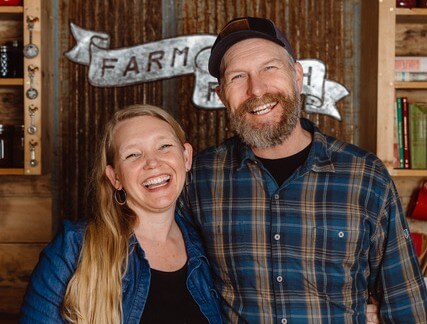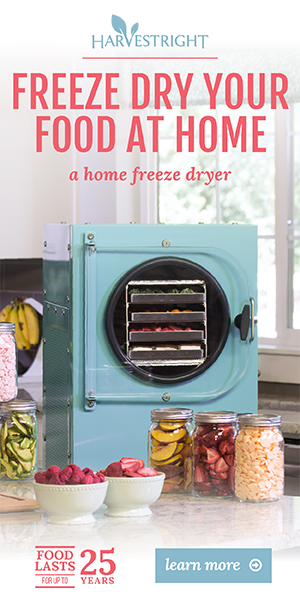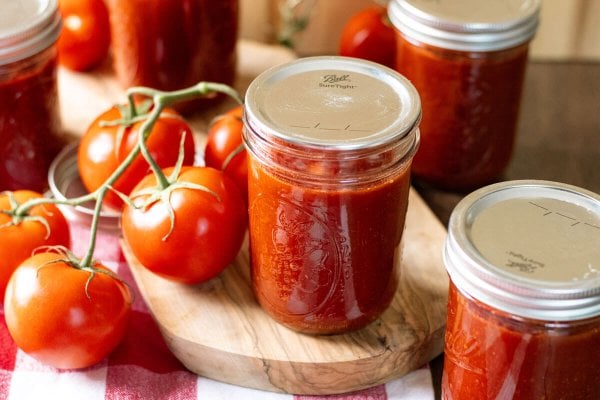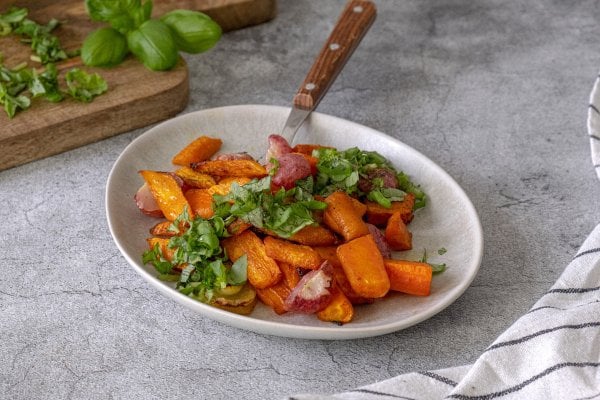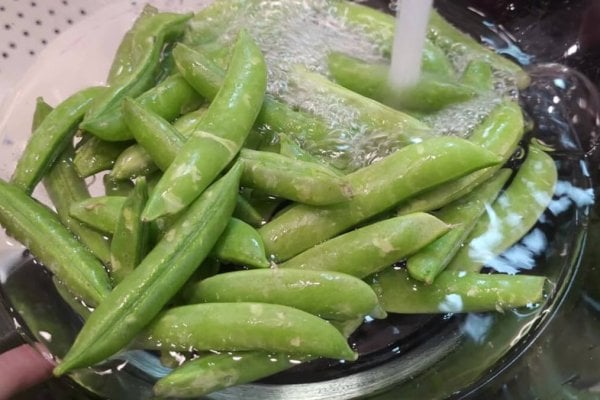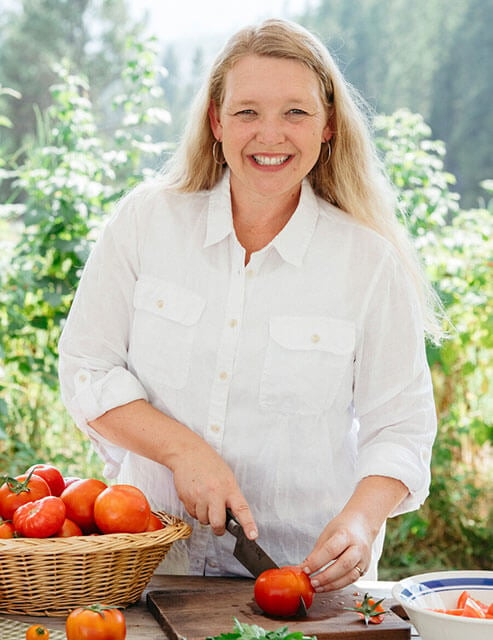Are you ready to add home canning to your homesteading skills but unsure which is the best pressure canner to buy? In this complete guide, I’ll explain the differences between electric and stovetop canners, pressure canners vs. pressure cookers, and important factors to consider before making your purchase.
I’ve also included detailed information on quality canners available in today’s market so you can compare them all in one place.

Table of Contents
ToggleWhy I Love Pressure Canning
Learning to pressure can has become more than preserving foods to stock our pantry. This preservation method is wonderful for preparing wholesome, ready-to-eat convenience meals.
Walking into my pantry, grabbing a few jars, and producing a meal in less than 20 minutes is one way I avoid processed foods and make cooking from scratch simple.
Canning has a learning curve, which is why I have shared my pressure canning tips and canning mistakes to avoid. For those of you who are serious about becoming proficient at canning, you’ll want to check out my Abundant Pantry Canning Masterclass. It will equip you with everything you need to know to can confidently at home.
Whether you are a beginner or a seasoned canner, purchasing the best pressure canner for your homestead is a big investment, so there’s a lot of pressure to get it right. (No pun intended!)
All jokes aside, I get it! Spending our dollars wisely by investing in quality equipment is a priority here at Riverbend, and we love to share what we learn along the way. You can check out some of our other purchasing guides here:
- Best Food Dehydrators: Find the Right One for Your Homestead
- Choosing the Best Grain Mills for Your Homestead
- What Is the Best Harvest Right Freeze Dryer For You?
- Chicken Tractor Basics & What to Consider When Buying One
- Benefits of Cast Iron (+Choosing the Best, New or Used)
- Are Quality Garden Tools Worth the Cost?
- Preservation Tools on a Budget

Types of Pressure Canners
Before choosing the best pressure canner, it’s important to recognize that there are different types, each with its own unique features, benefits, and drawbacks, catering to various needs and preferences.
- Dial Gauge Stovetop Pressure Canner – Dial gauge canners offer the most precise pressure measurement capability but need regular calibration.
- Pressure Gauge Stovetop Pressure Canner – Pressure or weighted gauge canners are simpler to use. They adjust pressure with weights, which is not as precise as the dial gauge method, but weighted gauges don’t need calibration.
- Electric Pressure Canners – The electric or digital pressure canner is touted as the best pressure canner for beginners. By automating the canning process, it promises consistent pressure and temperature. However, electric pressure canners are more expensive and cannot be tested, so you have to rely on the manufacturer’s reputation to trust that the pressure remains accurate over time and use. It’s for this reason that electric pressure canners did not make the cut for our list of recommendations.
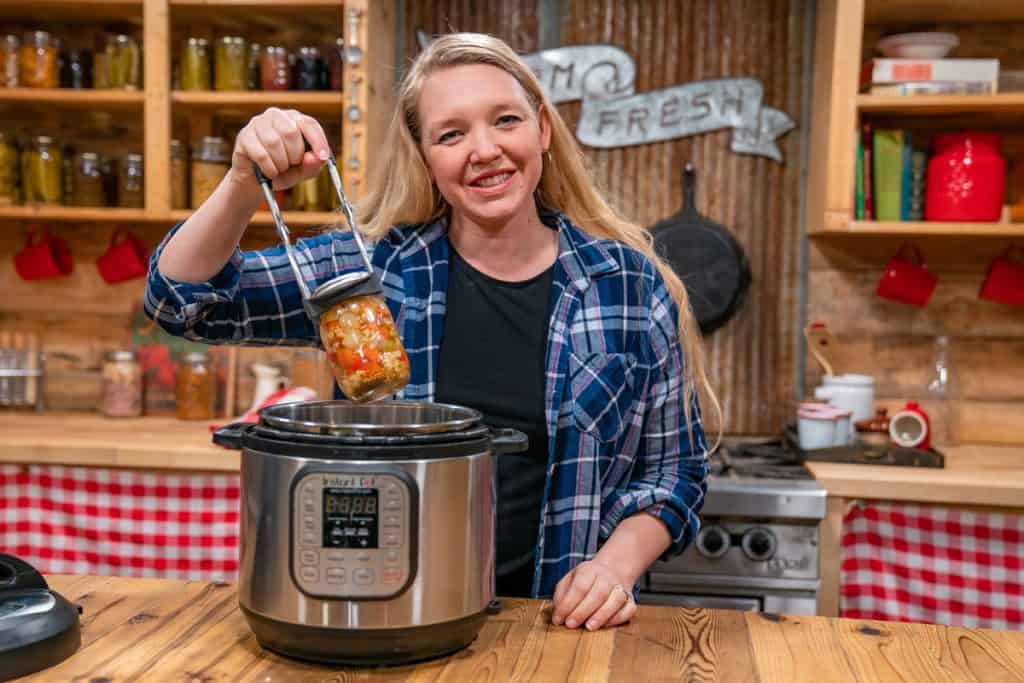
Pressure Canner vs. Pressure Cooker
While both are valuable tools for the homesteader’s kitchen, there are distinct differences between pressure canners and pressure cookers. You can cook foods in a pressure canner, but you should never try to can foods in a pressure cooker (despite what the staged photo above may imply).
You can learn more in detail why using a pressure cooker for canning is not safe here. Refer to the table below, which shows the key differences between a pressure canner and a pressure cooker:
| Pressure Canner | Pressure Cooker |
| Large Capacity – Must hold a minimum of four 1-quart size jars to qualify as a canner. | Typically, ½ to ⅓ the capacity of a pressure canner. |
| Equipped to accurately measure the pressure applied to jars. | Does not include gauges to properly monitor required pressure for specified times. |
| It can be used to pressure cook foods (such as a large roast), water bath can (for high-acid foods), or pressure can (for low-acid foods). | Used exclusively to pressure cook foods, and not appropriate for canning. |

What to Consider Before Purchasing
Before comparing models, consider your individual needs. Here are some basic guidelines to remember:
- Canning Safety – There are two basic methods of canning: water bath canning and pressure canning. You can use the water bath method in pressure canners, but you cannot pressure can in water bath canners. Make sure you understand the differences when selecting a canner, have a good understanding of which foods need to be water bath vs. pressure canned, and also refer to this guide on what foods should never be canned.
- Budget – Having a budget helps you choose wisely without overspending. Prices vary a lot, so find a canner that’s worth the cost without losing quality or important features.
- Size – The size of the canner is also important. Consider your kitchen space and storage to determine how the size will affect your cooking and canning.
- Capacity – If you have a big family or can a lot, you’ll need a larger canner, which will make your canning more efficient. I love my gigantically huge pressure canner that holds 19 pint jars or 14 quart-sized jars for big-batch canning days, but this may be overkill for your needs.
- Stove Top – If you have a glass stove top, check if the canner is compatible. Not all canners work on glass stoves, and using the wrong one can damage both. If you have a glass stove, consider purchasing a Camp Chef outdoor cook stove just for canning!
- Safety Features – Lastly, look at the safety features of your pressure canner. Modern canners have safety valves, locking lids, and gauges. These features allow you to safely process your food, providing precise control to prevent accidents and make the process smoother.

Pressure Canning Tips
Filling your pantry with jars of home-canned food is very rewarding. Here are some basic tips all home canners should follow. You can find more tips, hacks and answers to canning FAQs here:
- Use Fresh Ingredients – The quality of your canning depends on the ingredients. Choose fresh produce and meats for the best results.
- Inspect Your Equipment – Check your pressure canner, gaskets, and valves often. This keeps your canning safe and prevents waste.
- Properly Clean/Sterilize Jars – When pressure canning, you don’t need to sterilize jars if they’re going to pressure cook for 10 minutes or more. However, if your recipe calls for a shorter pressure cook time, sterilizing is necessary. Otherwise, cleaning jars with hot, soapy water is sufficient. To sterilize jars, you can do so by running them through the dishwasher or by boiling them for 10 minutes.
- Follow Recipes Precisely – For safety, stick to the recipes exactly. You can check out my canning recipe archives here. The National Center for Home Food Preservation also has many reliable recipes.
- Use a Jar Lifter – A jar lifter is a relatively inexpensive tool worth the investment to provide a safe grip and avoid burns.
- Label and Store Jars Properly – A Sharpie pen is one of my top homesteading must-haves. Make sure you date and label each jar with what’s inside.
- Vent the Canner Correctly – Don’t take shortcuts, and always allow the canner to vent for 10 minutes before adding pressure.
- Release Pressure Properly – To avoid siphoning of food from your jars, properly release pressure naturally and then remove the rocker for 10 minutes to allow pressure to neutralize.

Choosing the Best Pressure Canner For You
All American 930 Pressure Canner/Cooker
All American boasts unmatched durability and reliability for good reason. Their metal-to-metal seal represents a breakthrough in pressure cooker design, eliminating the need for traditional rubber or silicone gaskets.
This feature ensures a steam-tight seal every time, enhancing both the safety and efficiency of your cooking and canning experience. All American pressure canners come in a variety of sizes to meet your individual needs, but the 930 model is worth the investment if you have a large quantity to can.
Average Customer Review Rating: ⭐⭐⭐⭐⭐5 Stars (Out of 9,260 ratings)
“Best kitchen investment ever. An easy intro into an awesome field of home preservation. It will blow your mind!” – All American Customer Review
Specifications
- Price: $499.95
- Dimensions: Height: 19”, Diameter: 12-1/4”
- Jar Capacity: 14 Quarts or 19 Pints (19 regular mouth or 14 wide mouth)
- Material: Heavy-duty cast aluminum
- Weight: 21.25 Pounds
- Heat Source: Gas and electric only
- Glass Stovetop Compatible: No
- Safety Features: This product features an auto-release valve for enhanced safety, providing a reliable, steam-tight seal that adjusts to pressure changes. The easy-to-read pressure gauge lets you know when the internal pressure is down to zero, and the cooker/canner is safe to open.
- Warranty: Limited Lifetime Warranty
- Country of Manufacture: USA
Included in Your Purchase
- All American Pressure Cooker/Canner
- 2 Canning Racks
- Recipe & Instruction Book

Presto 23 Quart Pressure Canner
The Presto 23-quart Pressure Canner is smaller in size and capacity but is an economical option for a combination of water bath canning, pressure canning or pressure cooking. It is made of heavy-gauge aluminum for fast, even heating.
Average Customer Review Rating: ⭐⭐⭐⭐⭐4.9 Stars (Out of 37 ratings)
“Best kitchen purchase I ever made! Bought mine 2 years ago and use it all the time! I have put up tomatoes, peas, corn, soups, stews, spaghetti sauce, pulled pork, chicken and lots of other things. Very simple to understand and to use. I’ve never had anything not seal and spoil. I love canning.” – Presto Customer Review
Specifications
- Price: $199.99
- Dimensions: Height: 11-¾” (15-1/4″H w/ lid), Diameter: 12-¼”
- Jar Capacity: 7 Quarts or 20 Pints
- Material: Heavy-gauge aluminum
- Weight: 10.5 Pounds
- Heat Source: Gas and electric only. Note: This pressure canner is designed for use on household range burners of 12,000 BTUs or less.
- Glass Stovetop Compatible: Yes
- Safety Features: The easy-to-read gauge automatically registers the complete range of processing pressure, and the air vent/cover lock allows pressure to build up only when the cover is closed properly and prevents the cover from opening until pressure is safely reduced.
- Warranty: 12-year limited warranty
- Country of Manufacture: China
Included in Your Purchase
- Presto Pressure Cooker/Canner
- Canning Rack
- Recipe & Instruction Book

Denali TANKER™ 23 Quart Pressure Canner
Newer to the market than Presto, the Denali TANKER™ 23 Quart Pressure Canner is also an economical option. It is equipped with Denali’s exclusive PreserveLock technology, which offers safe operation that exceeds industry standards.
Average Customer Review Rating: ⭐⭐⭐⭐⭐4.5 Stars (Out of 159 Reviews)
“It’s super easy to use! I love all the extra safety features. I’m brand new to pressure canning and have had no issues so far. Pressure canning has become my newest fixation!” – Denali Customer Review
Specifications
- Price: $157.95
- Dimensions: Height: 15” Diameter: 13-1/2”
- Jar Capacity: 7 Quarts or 20 Pints
- Material: Aluminum & Stainless Steel
- Weight: 14 Pounds
- Heat Source: Gas, electric, or open flame. Note: This pressure canner is designed for use on household range burners of 12,000 BTUs or less.
- Glass Stovetop Compatible: Yes
- Safety Features: The built-in emergency air vent for overpressure release adds an extra layer of safety, and there is a second emergency valve on the left handle of your TANKER™, giving you more peace of mind.
- Warranty: 3-year extended warranty (purchased separately)
Included in Your Purchase
- 1 Denali Pressure Canner:
- 1 Premium Pressure Gauge:
- 2 Pressure Regulators (15-pound attached, 10-pound included)
- 1 Canning Rack
- 12-Pack Denali Lids® (Wide)
- 12-Pack Denali Lids® (Regular)
- Safety & Operational Manual
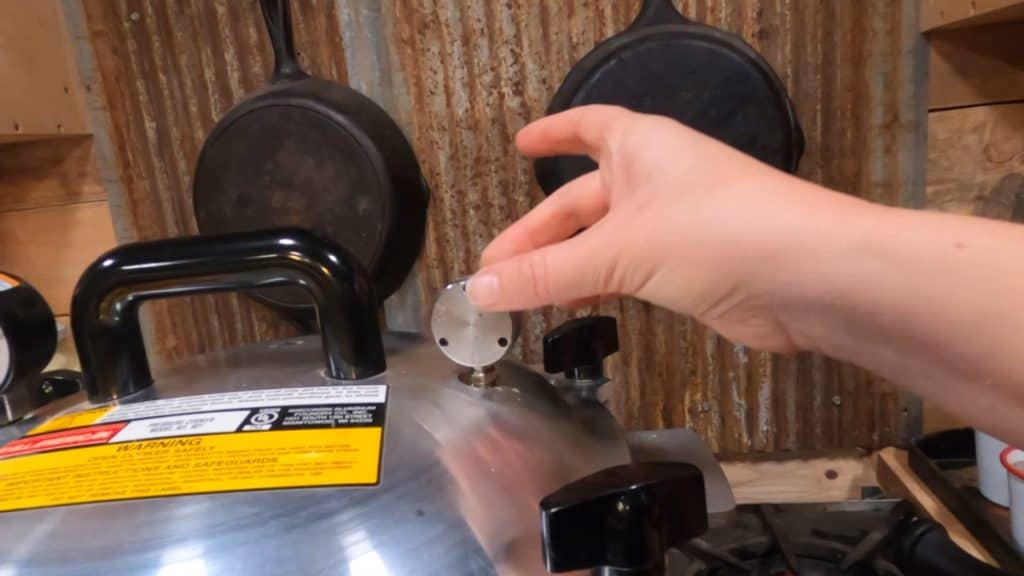
FAQ
Proper pressure canning at home is safe, economical, and convenient. It keeps food nutritious and helps you be more self-sufficient.
There are many types of pressure canners, including those with a dial gauge, weighted gauge, or an electric model. This guide explains the details of each one.
Before buying, consider price, size, capacity, and stovetop compatibility. Make sure it fits your budget and kitchen space.
For cooking meat, look for a canner with high capacity and consistent pressure.
All American canners are known for quality and sealing. Presto canners are affordable and easy to use. Both brands have loyal fans and offer good options for most budgets.
For small kitchens, consider compact canners like 12-16 quart models. They save space but still perform well.
Electric canners cannot be tested for safety. For this reason, we do not recommend these models.
Use this guide to answer everything you should know to select the best pressure canner for you.

Other Posts You May Enjoy
- Best Food Dehydrators: Find the Right One for Your Homestead
- Choosing the Best Grain Mills for Your Homestead
- What Is the Best Harvest Right Freeze Dryer For You?
- Chicken Tractor Basics & What to Consider When Buying One
- Benefits of Cast Iron (+Choosing the Best, New or Used)
- Are Quality Garden Tools Worth the Cost?
- Preservation Tools on a Budget

